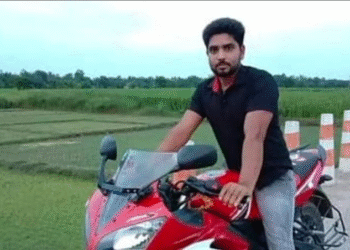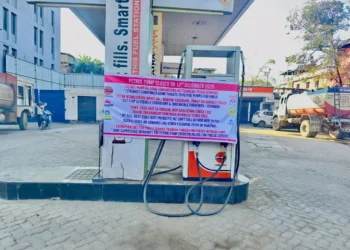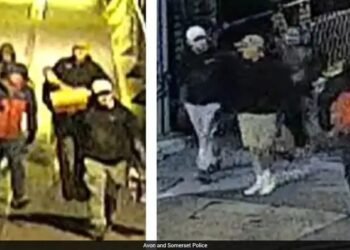The case was triggered by a Dalit whistleblower, a former sanitation worker at the Dharmasthala temple, who alleged he was forced to bury hundreds of bodies between 1995 and 2014—many of them women and children who showed signs of sexual violence, torture, and murder.
BY PC Bureau
July 31, 2025 – In a major breakthrough in the ongoing investigation into the alleged mass burials in Dharmasthala, Karnataka, the Special Investigation Team (SIT) uncovered partial skeletal remains at the sixth excavation site near the Netravathi River’s bathing ghat. This marks the first confirmed human remains recovery in a probe that has shaken the nation with claims of systemic rape, murder, and cover-ups spanning two decades.
Background: Whistleblower’s Shocking Allegations
The investigation began after a 48-year-old former sanitation worker, who served at the Dharmasthala temple from 1995 to 2014, filed a complaint on July 3. The Dalit whistleblower alleged he was coerced into disposing of hundreds of bodies, many of women and minors who bore signs of sexual violence. Driven by guilt, he returned after a decade to expose what he called a long-running “mass burial cover-up.”
READ: Mumbai & Malegaon: Who Failed Justice—Courts or Cops?
He presented the police with photos of unearthed skeletons and identified 13 burial sites, alleging bodies showed signs of strangulation, acid burns, and sexual assault. His claims also reignited anger over past unresolved cases like the 2012 rape and murder of 17-year-old Sowjanya, which activists allege was suppressed due to political and institutional interference.
🚨 #BREAKING: Major twist in the #Dharmasthala human remains case — #SIT uncovers #skeletal remains at Point No. 6, one of 13 sites marked from the complainant’s explosive claims. Investigation intensifies. 🔍⚠️ #DharmasthalaCase #BreakingNews #SITFindsRemains pic.twitter.com/aRl8L3oJXv
— Headline Karnataka (@hknewsonline) July 31, 2025
Breakthrough Discovery at Site 6
On July 31, the SIT—led by DIG M.N. Anucheth—discovered partial human remains at the sixth site after five prior excavations yielded no results. The find, near a forested area close to the bathing ghat, was conducted in the presence of independent witnesses, advocates, and the whistleblower himself.
“This is the first physical evidence recovered,” an SIT source told The New Indian Express. The remains will undergo forensic testing to determine age, origin, and cause of death.
The dig, involving laborers, a dog squad, and heavy equipment, was executed with caution. Posts on X (formerly Twitter) described the discovery as a “turning point” in the investigation.
SIT Progress and Political Pressure
The SIT was formed on July 19 by the Karnataka government under CM Siddaramaiah, following public outrage. Headed by DGP Pronab Mohanty, the team is probing allegations involving over 100 rape-murders, allegedly linked to powerful individuals in the temple’s ecosystem.
READ: Modi-Adani Nexus has killed Indian economy: Rahul
Earlier excavations yielded only a PAN card and a Rupay debit card, raising skepticism. However, the temple’s spokesperson K. Parshwanath Jain called for a “fair and transparent” inquiry.
Meanwhile, the whistleblower, who had previously submitted skeletal remains and photographs to court, remains under police protection and has offered to undergo polygraph and brain-mapping tests.
Wider Repercussions and Public Reaction
The discovery has intensified scrutiny of Rajya Sabha MP and temple patron D. Veerendra Heggade, although no evidence yet links him to the crimes. The Congress government faces pressure to deliver a credible probe, while BJP’s R. Ashok warned against prematurely maligning the temple.
Online, the find sparked emotional reactions. Prominent users like @dhanyarajendran and @ArunDev1 labeled it a “breakthrough,” urging continued investigation regardless of victim count—“even one life matters.”
Activists, including Ojaswi Gowda and Sachin Deshpande, stressed the need for unbiased investigation, comparing the case’s gravity to past failures like Sowjanya’s.
Forensic experts will now analyze the remains for identity and cause of death. Excavations will proceed at the seven remaining sites, while new voices—like Sujatha, whose daughter disappeared in 2003—have added urgency by seeking closure.
The partial remains found in Dharmasthala may be the first step in uncovering a long-hidden truth. The whistleblower’s bravery has reopened wounds and demanded accountability in a place many saw as sacred. As investigations continue, the nation waits—for answers, for justice, and for the truth beneath the soil.













